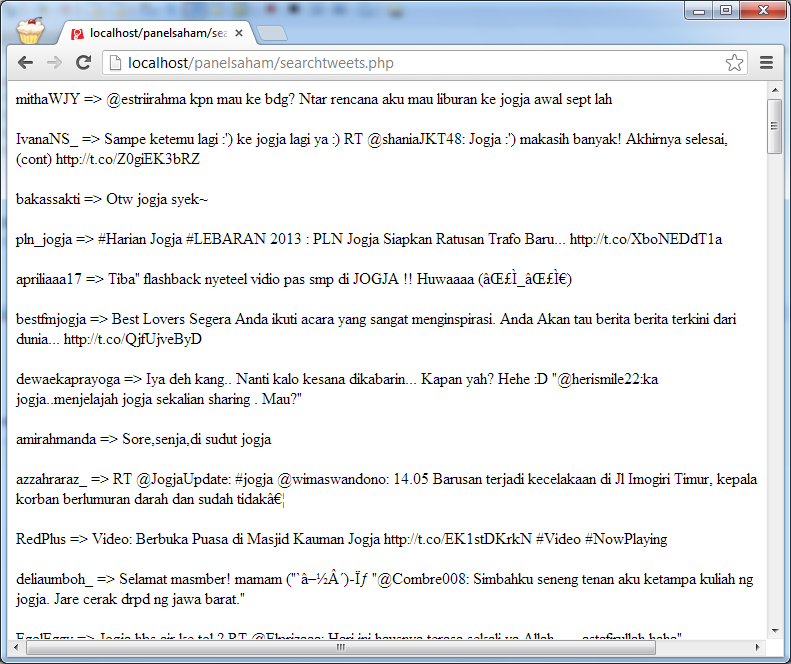- How To Program Twitter Api Key And Secret
- How To Program Twitter Api Python
- How To Program Twitter Apiary
- How To Program Twitter
- How To Program Twitter Api Access Token
- Twitter Api Key
Create Your Own Twitter Client Using Java Programming Elisha Chirchir 15 Oct, 2013 23 Comments Java Programming, Twitter API Programming A twitter client does what the Twitter site does as well as the Twitter App. OAuth Version 1. Opposed to standard password-based authentication – OAuth distinguishes between the server (Twitter), the third-party client (the program calling the API) and the resource owner (the owner of the API account) by specifying an authentication flow where the resource owner grants access to the third-party client by programmatically.
How To Program Twitter Api Key And Secret
I have asked by a few people lately to help walk them through using twitter API in R, and I’ve always just directed them to the blog post I wrote last year during the US presidential debates not knowing that Twitter had changed a few things. Having my interest peaked through a potential project at work I tried using some of my old code only to confronted with errors.
First of all, you now need to have a consumer key and secret from twitter themselves. After some research, I found it really easy to get one by going to twitter and creating a new applications. Don’t be discouraged, anyone can get one. Here is what the page looks like:
Enter your name, brief description, and a website (you can use your blog or a place holder), and once you agree it will give you a screen like this where you get your consumer key and secret:
You now have to authenticate within R by inserting your consumer key and secret into this code:
It should spit out text and uri to get and input a pin, like:
To enable the connection, please direct your web browser to:
When complete, record the PIN given to you and provide it here:
You are now ready to use the searchTwitter() function. Since I work in real estate software, Kwelia, I wanted to do sentiment analysis for apartment hunting in manhattan, so I wrote out the following:
where “apartment hunting” is what I am searching for, the geocode is a lat long with greater circle of five miles of where the tweets are sent from (union square, manhattan), n is the number of tweets i want, and retweet modifies n to the limit of tweets available if n is too high. In this case you, I got back 177 tweets.
QED
Related

In this text I am going to describe a very straightforward way of how to make use of Twitter’s REST API v1.1. I put some code together for that purpose, so that requesting data just needs the API URL, the API parameters and a vector containing the OAuth parameters.
How To Program Twitter Api Python
Before you can get started you have to login to your Twitter account on dev.twitter.com, create an application and generate an “Access Token” for it. So let’s jump right in and fetch IDs of 10 followers of @hrw (Human Rights Watch). The necessary code is located on GitHub – download all three files and then you can just edit the example below as suggested.
The result is a JSON containing the IDs of 10 followers (and it looks so pretty thanks to jsonlite::prettify()):
Twitter provides access to its service via a REST API whose current version is 1.1. Authorization is realized through OAuth version 1.0a. Due to that, handling the API is less trivial than just appending your password to the request – but also considerably more secure. Opposed to standard password-based authentication – OAuth distinguishes between the server (Twitter), the third-party client (the program calling the API) and the resource owner (the owner of the API account) by specifying an authentication flow where the resource owner grants access to the third-party client by programmatically providing a secret token in the end. But as in this case the third-party client and the resource owner are effectively identical the process simplifies to just manually creating an access token and its corresponding “token secret” and then using those directly within the script. Referring to the OAuth 1 authentication flow chart – we can skip steps A to F and focus on entirely on G.

The authorization of a request itself happens by glueing together a string which contains all the details about that request – URL, query parameters, OAuth keys and values – and then signing this so called “signature base string” with the two secret tokens –
and
applying an algorithm referred to as HMAC-SHA1. HMAC-SHA1 is provided by the digest package. What you get in the end after some more processing is the
How To Program Twitter Apiary
which is sent along with the request and verified by the server. The creation of that signature is implemented in RTwitterAPI/oauth1_signature.R – a detailed description may be found here.
The GET request which is finally sent via RCurl needs a propperly set up header containing an “Authentication” section providing all the various
settings. This part is implemented in RTwitterAPI/twitter_api_call.R. The meaning of the
key/values, as well as the composition of the header is described here.
How To Program Twitter
(original article published on www.joyofdata.de)